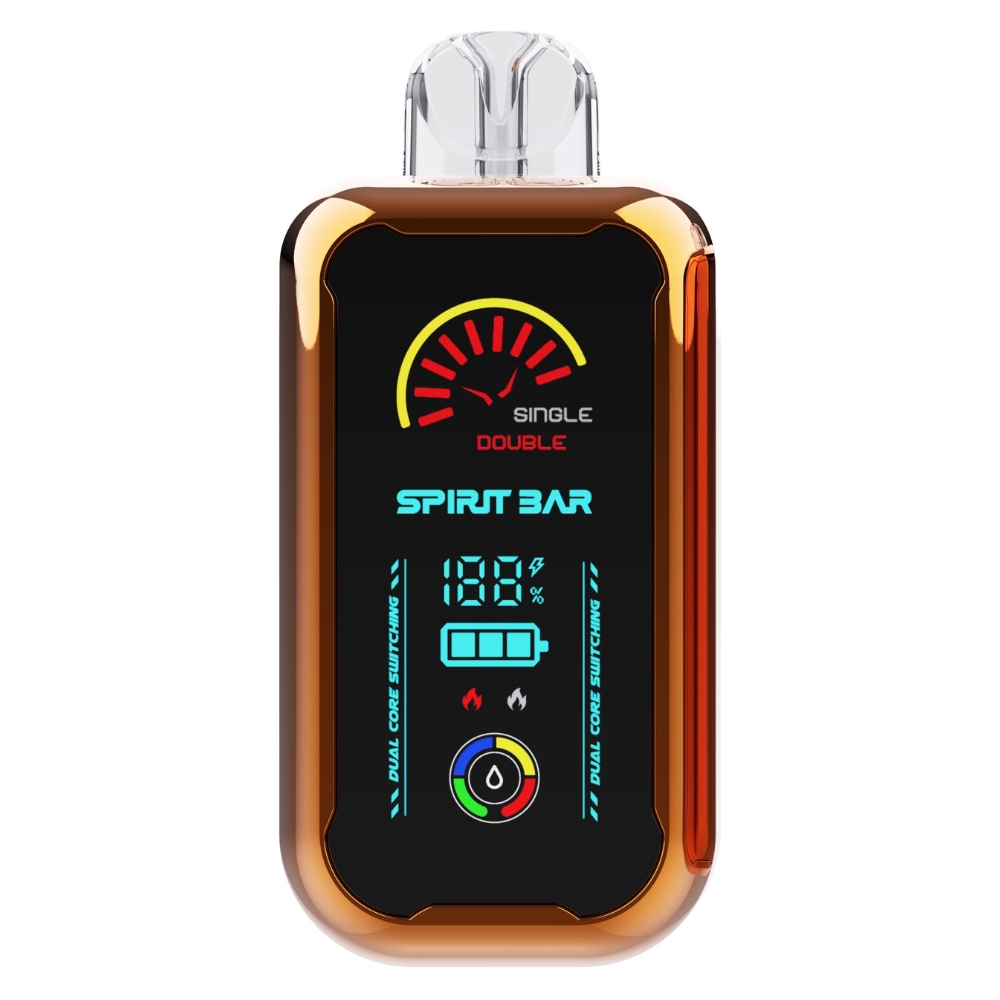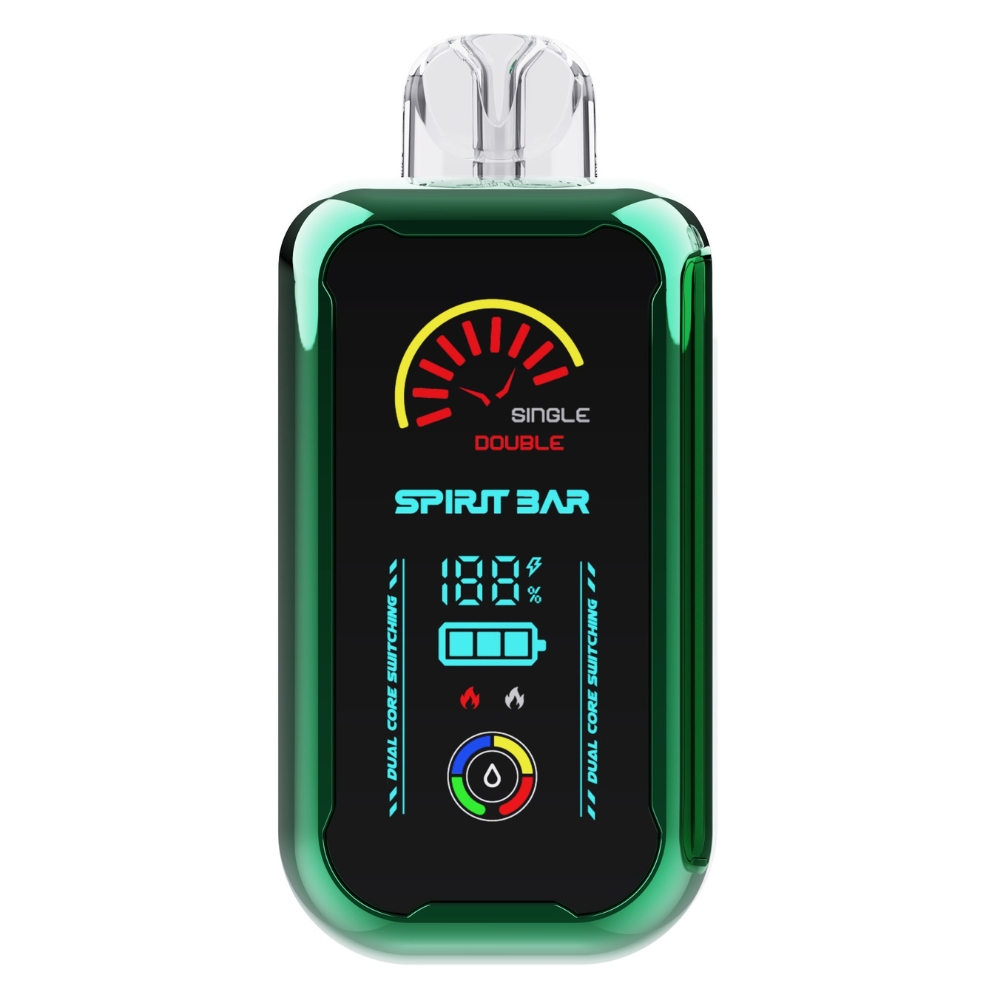Are Vapes Better Than Cigarettes? A Friendly Comparison
Are vapes better than cigarettes? This is a question that has been asked by many people who are looking to quit smoking or find a healthier alternative. Vaping has become increasingly popular in recent years, with many people claiming that it is a safer and healthier alternative to smoking. However, it is important to understand the risks and benefits of both vaping and smoking before making a decision.
Vaping involves inhaling an aerosol, also known as vapor, which is produced by an e-cigarette or other vaping device. This aerosol usually contains nicotine, flavorings, and other chemicals. While vaping may be less harmful than smoking cigarettes, it is not entirely safe. According to the American Heart Association, e-cigarettes should not be promoted as a safe alternative to smoking. Vaping liquids may contain fewer contaminants than cigarettes, but they still pose risks to your health.
Understanding Vapes and Cigarettes
https://www.youtube.com/watch?v=9dZS_Rniak0&embed=true
If you’re considering switching from smoking cigarettes to vaping, it’s important to understand the differences between the two. While vaping is often marketed as a safer alternative to smoking, it’s important to note that it still carries risks.
What are cigarettes?
Cigarettes are a type of tobacco product that contain a blend of tobacco leaves, chemicals, and additives. When cigarettes are lit, they produce smoke that is inhaled into the lungs. This smoke contains a variety of harmful chemicals, including tar, carbon monoxide, and heavy metals.
What are vapes?
Vapes, also known as e-cigarettes, are electronic devices that heat up a liquid (often called e-juice or vape juice) to create a vapor that is inhaled. The liquid typically contains nicotine, flavorings, and other chemicals. While vapes do not produce the same harmful smoke as cigarettes, they still contain chemicals that can be harmful to your health.
How do vapes and cigarettes compare?
When it comes to the health risks associated with vaping versus smoking cigarettes, research generally accepts that while vaping can harm the lungs and other bodily systems, its impact is much less than tobacco smoking. However, it’s important to note that vaping is still not completely safe.
One of the biggest differences between vaping and smoking is the number of chemicals involved. While cigarettes contain thousands of chemicals, many of which are toxic, vapes typically contain fewer chemicals. However, the chemicals in vape liquid can still be harmful, particularly when heated and inhaled.
In addition, while vaping is often marketed as a way to quit smoking, it’s important to note that many vapes still contain nicotine. Nicotine is highly addictive and can be harmful to the developing brains of young people.
Overall, while vaping may be less harmful than smoking cigarettes, it’s important to approach it with caution and understand the potential risks involved.
Health Impacts of Vaping vs Smoking
https://www.youtube.com/watch?v=ygxMr2AE_bc&embed=true
When it comes to health impacts, vaping and smoking have some similarities, but also some significant differences. Here are some of the key effects of vaping and smoking on your health.
Effects on Lungs
Both vaping and smoking can have negative effects on your lungs. Smoking is well known to cause lung cancer, chronic obstructive pulmonary disease (COPD), and other respiratory problems. While vaping is generally considered to be less harmful than smoking, it can still damage your lungs. Vaping can cause inflammation of the airways and lung tissue, which can lead to breathing difficulties and other respiratory problems.
Effects on Heart
Smoking is a major risk factor for heart disease, which is the leading cause of death worldwide. Smoking can damage your blood vessels, increase your blood pressure, and raise your risk of heart attack and stroke. Vaping is also associated with an increased risk of heart disease. While vaping is less harmful than smoking, it still exposes your heart to nicotine and other chemicals that can cause damage.
Effects on Oral Health
Smoking is also known to have negative effects on your oral health. Smoking can cause gum disease, tooth loss, and oral cancer. Vaping can also have negative effects on your oral health. Vaping can cause dry mouth, which can increase your risk of tooth decay and gum disease. Vaping can also irritate your throat and mouth, which can lead to mouth sores and other oral health problems.
In conclusion, while vaping is generally considered to be less harmful than smoking, it still has negative effects on your health. Both vaping and smoking can damage your lungs, increase your risk of heart disease, and have negative effects on your oral health. If you are a smoker, quitting smoking is the best thing you can do for your health. If you are considering vaping as an alternative to smoking, it is important to understand the potential risks and talk to your doctor about the best options for you.
Chemical Composition Comparison
When it comes to comparing the chemical composition of vapes and cigarettes, there are some key differences to keep in mind. While both products contain nicotine, the way in which the nicotine is delivered is different. Cigarettes burn tobacco, which releases a complex mixture of chemicals, including tar, carbon monoxide, and other harmful substances. On the other hand, vapes heat a liquid solution, which releases an aerosol that is inhaled by the user.
According to a study published in Frontiers in Chemistry, the chemical composition of e-cigarette aerosols is primarily composed of glycerol, propylene glycol, water, and nicotine. Other minor constituents make up around 3% of the composition. In comparison, the “tar” in cigarette smoke is composed of minor constituents, with 58-76% of the smoke being made up of these substances.
Another study published in the Journal of Hazardous Materials compared the chemical composition of aerosols from heated tobacco products, electronic cigarettes, and tobacco cigarettes. The study found that the aerosols from heated tobacco products and e-cigarettes contained fewer harmful substances than tobacco cigarettes.
It is important to note that while vapes may contain fewer harmful substances than cigarettes, they are not completely harmless. The long-term effects of vaping are still being studied, and there is concern about the potential health risks associated with inhaling aerosols into the lungs.
Overall, when comparing the chemical composition of vapes and cigarettes, it is clear that vapes contain fewer harmful substances. However, it is important to weigh the potential risks and benefits of using these products and make an informed decision based on your individual health needs and preferences.
Addiction Potential
One of the main concerns with vaping and smoking is the addiction potential. Both vaping and smoking contain nicotine, which is a highly addictive substance.
According to a study protocol, e-cigarettes have been marketed as a “healthier” alternative to tobacco smoking. However, the addictive potential of e-cigarettes is still a matter of debate.
Nicotine addiction is a serious issue and can have long-term health consequences. It is important to note that e-cigarettes can also be addictive, and users may continue to smoke along with vaping, which is referred to as “dual use” as per the American Heart Association.
Moreover, the addictive potential of e-cigarettes may be underestimated due to the variability of nicotine delivery across different devices and liquids. Therefore, more research is needed to determine the true addictive potential of e-cigarettes.
Overall, it is crucial to understand the risks associated with both vaping and smoking, and to make informed decisions about your health. If you are trying to quit smoking or vaping, reaching out to a healthcare professional or support group can be a helpful first step.
Cost Comparison
When it comes to cost, vaping is generally cheaper than smoking cigarettes. According to EcigaretteReviewed, vaping can be over 80% cheaper than smoking. This is because the cost of e-liquids and vaporizers are typically lower than the cost of cigarettes.
The cost of vaping can vary depending on the type of vaporizer and e-liquid you choose. High-end devices can be more expensive, but you can still save over 50% compared to the price of cigarettes. If you’re vaping as cheaply as possible, the savings increase to over 80% or even more than that.
On the other hand, the cost of smoking cigarettes can add up quickly. According to Wotofo, the cost of smoking to the world’s economy is still high with an estimate of 1.3 billion smokers. In the United Kingdom, the cost of smoking to the National Health Service (NHS) in 2015 was a whopping £2.6 billion.
In addition to the direct cost of cigarettes, there are also indirect costs to consider. These include the cost of healthcare for smoking-related illnesses, lost productivity due to illness or death, and the environmental cost of cigarette production and disposal.
Overall, if you’re looking to save money, vaping is likely the cheaper option. However, it’s important to note that the cost of vaping can still add up, especially if you’re using high-end devices and premium e-liquids.
Environmental Impact
When it comes to the environmental impact, vaping is not a perfect solution. According to The Lancet, vaping products are a rising environmental threat. Disposable e-cigarettes, in particular, are becoming more popular and can worsen this issue.
One of the biggest concerns is e-cigarette waste. Unlike cigarette butts, e-cigarettes introduce plastic, nicotine salts, heavy metals, lead, mercury, and flammable lithium-ion batteries into waterways, soil, and to wildlife. A study by the Truth Initiative found that e-cigarette waste is potentially a more serious environmental threat than cigarette butts. Even under severe conditions, e-cigarette waste won’t biodegrade.
Additionally, the production and transportation of vaping products contribute to their environmental impact. The manufacturing process of e-cigarettes requires energy and resources. The transportation of these products also contributes to carbon emissions.
However, it’s important to note that vaping has the potential to be less harmful to the environment than traditional cigarettes. Cigarette smoking is a major contributor to air pollution, and cigarette butts are one of the most littered items in the world. Vaping doesn’t produce the same level of air pollution, and e-cigarettes don’t produce cigarette butts.
Overall, while vaping may not be a perfect solution, it has the potential to be less harmful to the environment than traditional cigarettes. However, it’s important to properly dispose of e-cigarette waste and to consider the environmental impact of vaping products when making decisions about their use.
Public Perception and Social Impact
When it comes to vapes versus cigarettes, public perception has shifted in recent years. While e-cigarettes were once seen as a healthier alternative to smoking, many people now believe that they are just as harmful – if not more so. In fact, a study led by the American Cancer Society found that many adults in the United States now view e-cigarettes as “more harmful” than traditional cigarettes [[1]].
This shift in public perception can be attributed in part to the rise of vaping-related illnesses, such as EVALI, which caused hundreds of hospitalizations and dozens of deaths in 2019. Additionally, the COVID-19 pandemic may have played a role in changing public perception, as people became more concerned about respiratory health [[2]].
Despite the changing attitudes towards vaping, it is still a popular practice among young people. According to a study published in BMC Public Health, many adolescents and young adults are drawn to e-cigarettes because of their affordability, availability, and the variety of flavors available [[3]]. However, there are concerns that the popularity of vaping among young people could lead to a new generation of nicotine addicts.
The social impact of vaping is also a concern. While smoking cigarettes has long been stigmatized, vaping is still seen by many as a relatively harmless habit. However, there are concerns that the normalization of vaping could lead to more people taking up the habit, particularly young people who are most at risk for addiction [[4]]. Additionally, there are concerns that the use of e-cigarettes could serve as a gateway to other forms of drug use.
Overall, while public perception of vaping has changed in recent years, there are still concerns about the impact of e-cigarettes on public health and society as a whole. It is important for individuals to make informed decisions about their own health and for policymakers to consider the potential consequences of allowing the widespread use of e-cigarettes.
References
- Study shows public perception of e-cigarettes vs. cigarettes harms changed sharply during EVALI epidemic and COVID-19 pandemic
- Public perceptions of e-cigarettes vs. cigarettes harms influence population tobacco use patterns
- E-cigarettes use in the United States: reasons for use, perceptions …
- The social impact of vaping: what’s the evidence?
Regulation and Legal Aspects
When it comes to vaping, there are several regulatory and legal aspects to consider. While vaping is generally considered to be a safer alternative to smoking, it is still subject to regulation and legal restrictions in many places.
Age Restrictions
One of the most important aspects of vaping regulation is age restrictions. In many places, it is illegal to sell vaping products to anyone under the age of 18 or 21. These age restrictions are in place to help prevent young people from taking up vaping and becoming addicted to nicotine.
FDA Regulation
In the United States, the Food and Drug Administration (FDA) regulates vaping products. The FDA has the authority to regulate the manufacturing, distribution, and marketing of vaping products. This includes the ability to require warning labels, restrict advertising, and even ban certain products.
State and Local Regulations
In addition to federal regulations, there are also state and local regulations that govern vaping. Some states and cities have banned vaping in public places, while others have imposed taxes on vaping products. It is important to be aware of these regulations when using vaping products.
Legal Status
The legal status of vaping varies from country to country. In some places, vaping is completely legal, while in others it is heavily regulated or even banned. It is important to check the legal status of vaping in your area before using vaping products.
Overall, while vaping is generally considered to be a safer alternative to smoking, it is still subject to regulation and legal restrictions. It is important to be aware of these regulations and restrictions when using vaping products.
Vaping as a Smoking Cessation Tool
If you’re a smoker looking to quit, you may have considered using vaping as a tool to help you kick the habit. While vaping may have fewer toxic chemicals than tobacco cigarettes, it’s still not good for your health. However, some studies suggest that vaping may be a less harmful alternative to smoking, and may be helpful for some people trying to quit.
One study found that smokers who used e-cigarettes were more likely to quit smoking than those who used nicotine replacement therapy or no therapy at all. Another study found that e-cigarettes were more effective at helping people quit smoking than nicotine patches or gum.
However, it’s important to note that not all studies have found vaping to be an effective smoking cessation tool. Additionally, some studies have suggested that people who use e-cigarettes are more likely to continue smoking traditional cigarettes as well, which is referred to as “dual use.”
If you’re considering using vaping as a smoking cessation tool, it’s important to talk to your doctor first. They can help you determine if vaping is a good option for you, and can provide guidance on how to use e-cigarettes safely and effectively.
Overall, while vaping may be a less harmful alternative to smoking, it’s important to remember that it’s not without risks. If you’re looking to quit smoking, there are many other proven methods that may be more effective and safer, such as nicotine replacement therapy, counseling, and support groups.


